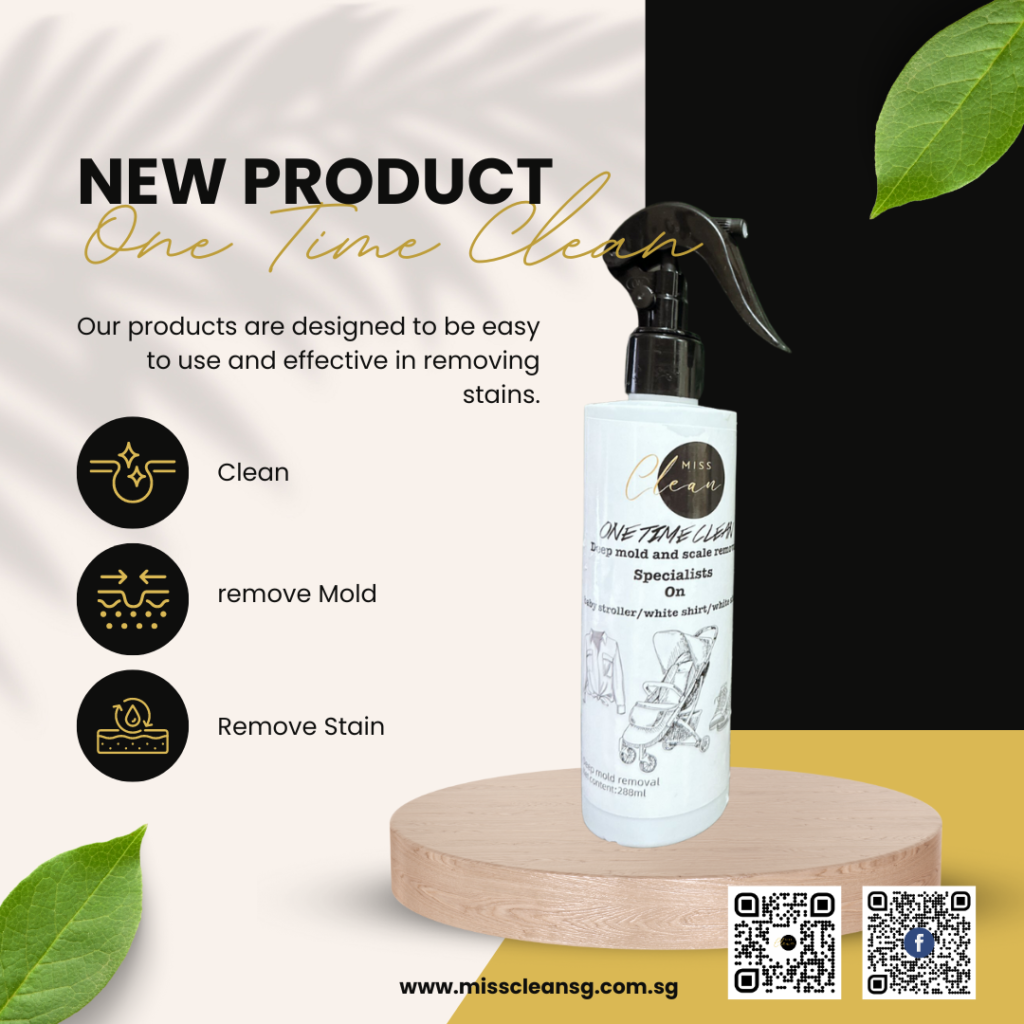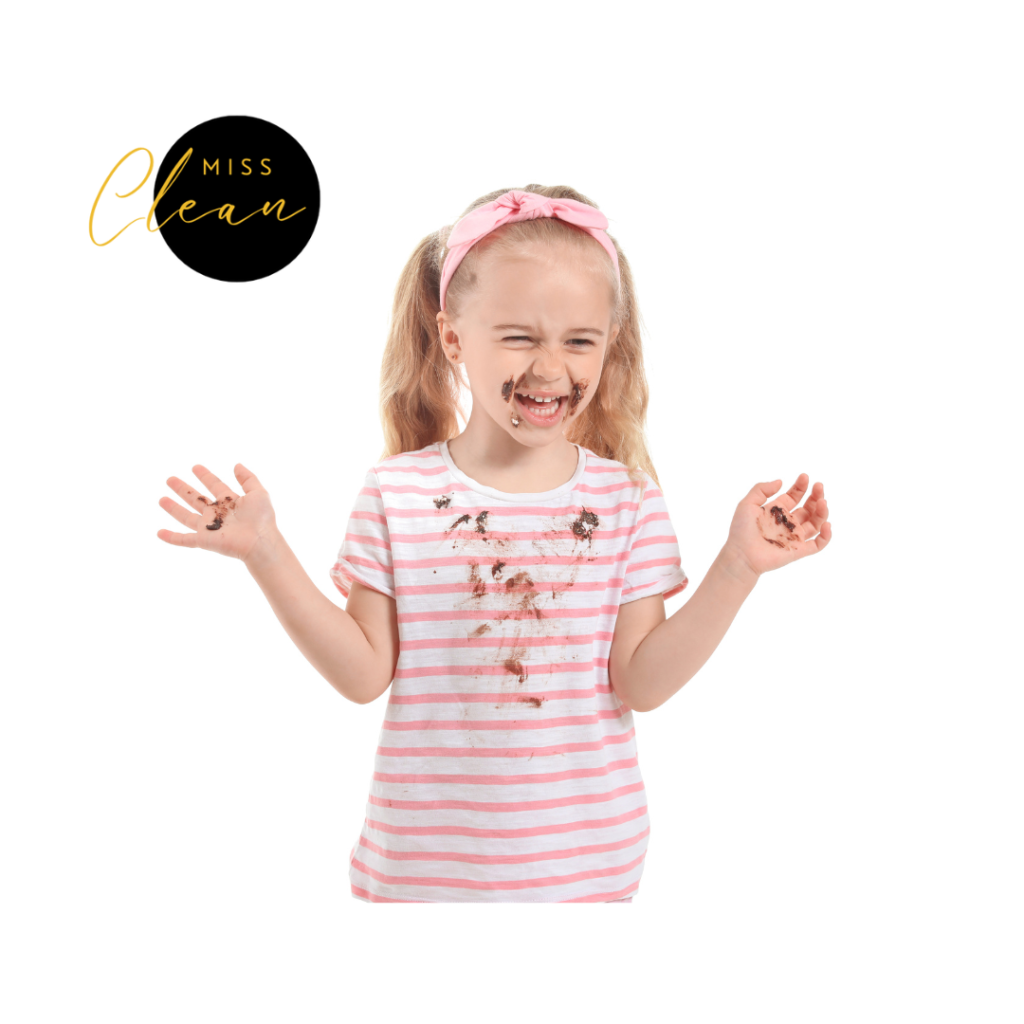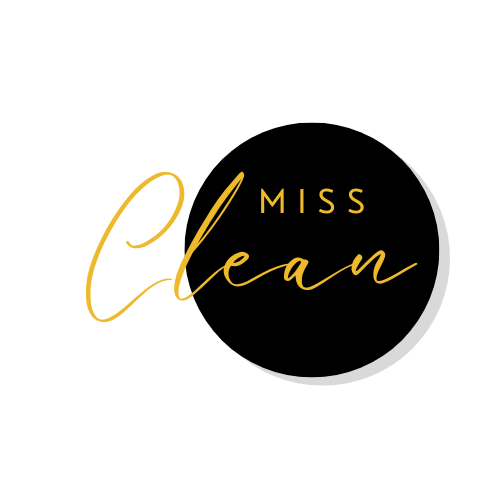Introduction:
We’ve all been there – a favourite shirt stained with coffee, a wine spill on a beautiful tablecloth, or a stubborn ink mark on our child’s school uniform. Stains can be frustrating and seemingly impossible to get rid of. But fear not! Miss Clean is here to rescue you from the clutches of stubborn stains. In this ultimate guide to stain removal, we’ll share our expert tips and tricks to help you tackle common stains effectively and restore your fabrics to their former glory.

Understanding Stains and Acting Swiftly:
Stains come in various forms, from food and beverages to ink and oil. The key to successful stain removal is acting quickly. The longer a stain sits, the harder it becomes to remove. Begin by identifying the type of stain you’re dealing with. Different stains require different treatment methods, so knowing what you’re up against is crucial before you begin.
Pre-Treatment: The First Line of Defense:
Pre-treating a stain is essential to loosen its grip on the fabric. Start by gently blotting the stain with a clean cloth or paper towel to absorb any excess liquid. Avoid rubbing the stain, as it can push it deeper into the fabric or cause it to spread. Once blotted, apply a stain remover product like Miss Clean’s StainBuster directly to the stain. Allow it to penetrate for a few minutes before proceeding to the next step.

Choosing the Right Technique for Different Stains:
a) Food and Beverage Stains: From ketchup and chocolate to wine and coffee, food and beverage stains are some of the most common culprits. For these stains, a mixture of mild dish soap and water works wonders or using Gently dab the stained area with the solution and rinse with cold water. Repeat as necessary until the stain is gone.
b) Ink Stains: Ink stains can be particularly stubborn. To tackle them effectively, dampen a clean cloth with rubbing alcohol and dab the stain gently. Continue blotting until the ink is lifted. Rinse with cold water and launder as usual.
c) Oil and Grease Stains: Oil and grease stains require special attention. Sprinkle baking soda or cornstarch onto the stained area to absorb the excess oil. Allow it to sit for a few minutes before brushing off the powder. Follow up by applying a pre-wash stain remover and laundering according to the garment’s instructions.

Handling Delicate Fabrics:
Delicate fabrics like silk, wool, and satin require extra care for stain removal. Always check the care label on your garment before attempting any stain removal technique. It’s best to seek professional help or consult a specialized cleaner if in doubt. However, gentle blotting with a mild detergent solution can often suffice for light stains on delicate fabrics.
Prevention and Maintenance:
Prevention is better than cure, which also holds true for stains. Consider using protective measures like tablecloths, placemats, and aprons to shield your belongings from potential stains. Treat stains promptly, and avoid exposing stained fabrics to heat, as it can set the stain permanently. Regular maintenance and laundering using quality products like Miss Clean’s laundry detergent can also help prevent stains from becoming ingrained.
Conclusion:
With Miss Clean’s expert tips and techniques, you’ll be equipped to tackle any stain that comes your way. Remember, acting swiftly and using the proper stain removal method for each type of stain is crucial. Don’t let stains ruin your favourite clothes, upholstery, or household items. Take charge and restore them to their pristine condition with the help of Miss Clean. So, the next time a stain dares to cross your path, you’ll be ready to combat it head-on, armed with the knowledge and tools to succeed. Say goodbye to stubborn stains and hello to a cleaner, fresher world with Miss Clean!
